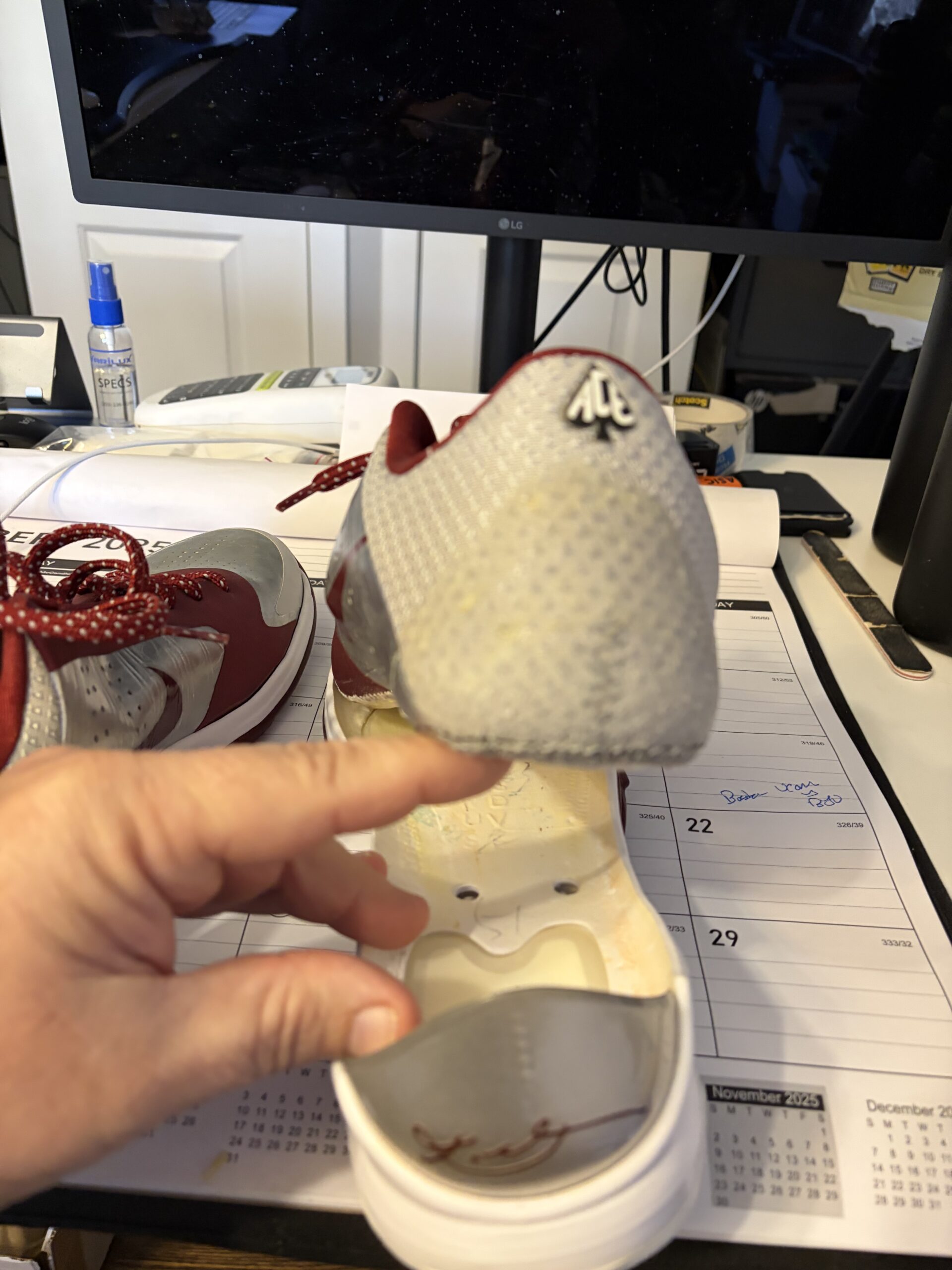Part 2 of 5 in our series on what college coaches look for at every position
[← Previous: Point Guard] | [Next: Small Forward →]
Welcome to Part 2 of our College Recruit Blueprint series, where we’re breaking down what college coaches look for at every position. In Part 1, we covered the point guard – the floor general who runs the show. Now we’re moving to the wing, where scoring meets defense and two-way players thrive.
This series is designed to give you position-specific intelligence that separates high school players from college recruits. We’re covering all five positions with the same framework: Physical Requirements, Technical Skills (Offense and Defense), Basketball IQ, and Intangibles. Today we focus on the shooting guard – the bucket getter who needs to do more than just score.
POSITION 2: SHOOTING GUARD
The bucket – your job is simple: get buckets, guard their best wing, and never let the defense breathe.
If you’re a shooting guard, college coaches are recruiting you for one primary reason: to score. But at the college level, being able to score isn’t enough. You need to be a two-way player who can lock down on defense, knock down shots from anywhere, and create your own offense when the team needs a bucket. This breakdown shows you exactly what it takes.
1. Physical Requirements
Speed and quickness: Quick enough to get separation off screens; can blow by closeouts; stay with quick guards on defense
Strength and physicality: Strong enough to finish through contact; hold your ground against bigger wings; absorb bumps coming off screens
Athleticism and explosiveness: Got hops to finish above the rim; quick release on your jumper; explosive cuts to get open
2. Technical Skills (Offense)
Primary scoring responsibilities: The bucket getter; go get 20+ any night; create your own shot when the offense stalls; catch and shoot specialist
Shooting range and accuracy: Automatic from three (35%+); pull up from anywhere; wet off the dribble and catch; money from mid-range; clutch free throw shooter
Ball-handling requirements: Can create off the bounce; tight enough handle to get to your spots; combo guard skills; attack closeouts hard
Passing and playmaking: Make the right read when help comes; swing it when you draw two; find cutters; secondary playmaker when needed
3. Technical Skills (Defense)
Primary defensive assignment: Lock up their best wing scorer; guard 1-3 depending on matchups
On-ball defense expectations: Stay attached to shooters; fight over every screen; contest every shot; make scorers work for everything
Help defense and positioning: Rotate on drives; play passing lanes; weak side help when bigs get beat; communicate switches
Rebounding responsibilities: Crash the glass hard; box out your man; push it in transition after boards
4. Basketball IQ
Court awareness and vision: Know where to be without the ball; read defenses for open looks; relocate for spot-ups
Decision-making under pressure: Know when to shoot and when to drive; recognize double teams quick; take smart shots
Understanding of spacing and timing: Move without the ball; time your cuts; space the floor proper; keep the offense flowing
System/scheme knowledge: Know every action; run off screens crisp; understand defensive coverages; exploit mismatches
5. Intangibles
Leadership qualities: Lead by putting in work; vocal when needed; competitive edge; set the tone with your energy
Communication skills: Call out screens on D; let shooters know you see ’em; talk through rotations
Work ethic and coachability: Gym rat mentality; constantly working on your craft; take feedback and apply it; film room junkie
Mental toughness and competitiveness: Short memory on misses; keep shooting with confidence; want to guard their best player; killer mentality in crunch time
NBA COMPS

Elite tier: Devin Booker (pure scorer), Donovan Mitchell (bucket machine), Anthony Edwards (two-way beast)
3-and-D specialists: Klay Thompson (catch and shoot legend), Mikal Bridges (lock up + buckets)
Shot creators: Zach LaVine (athletic scorer), Tyler Herro (microwave), CJ McCollum (smooth operator)
The Shooting Guard Evolution
The shooting guard position has evolved. College coaches don’t just want scorers anymore – they want two-way players. You need to be automatic from three (35%+ at minimum), but you also need to guard the opponent’s best wing and make them work for every point.
Think about it: if you can score 20 but give up 15 on defense, you’re only netting 5 points. But if you score 15 and hold your man to 5, you’re netting 10. College coaches see that math. They value shooting guards who can impact both ends.
The modern shooting guard needs to be a 3-and-D specialist at minimum, with the ability to create their own shot as a bonus. Study how Klay Thompson moves without the ball and never stops running through screens. Watch how Mikal Bridges guards multiple positions and still knocks down threes. That’s the blueprint for college-level shooting guards.
Your shooting percentage matters more than your scoring average. Coaches would rather have a player shooting 40% from three on 5 attempts than someone shooting 30% on 8 attempts. Efficiency wins games.
Your Next Steps
You know what college coaches want in a shooting guard. Now it’s time to evaluate yourself honestly and get to work. Track your shooting percentages in practice and games – if you’re not hitting 35%+ from three, that’s your first priority. Get in the gym and shoot until your form is automatic.
But don’t just work on offense. Commit to being a lockdown defender. Study film of elite defenders and learn how they move their feet, fight through screens, and contest shots. Guard your team’s best player in practice every single day. Make defense your identity.
The shooting guards who make it to college are the ones who can impact both ends of the floor. They’re gym rats who never stop working on their craft. They keep shooting with confidence even after misses. They take pride in shutting down the opponent’s best scorer. That’s the mentality you need.
College coaches are looking for complete two-way players at the shooting guard position. They want scorers who can also defend, athletes who also have high basketball IQ, and competitors who make winning plays. Be efficient, be versatile, be relentless. Master your craft on both ends of the floor. The shooting guards who get recruited are the ones who understand that defense is just as important as offense – and they dominate both.
Your blueprint is complete. Now go be unstoppable.
Continue the series:
- [← Previous: Point Guard]
- [Next: Small Forward →]
- Power Forward [Link]
- Center [Link]
- [Back to Series Introduction]





